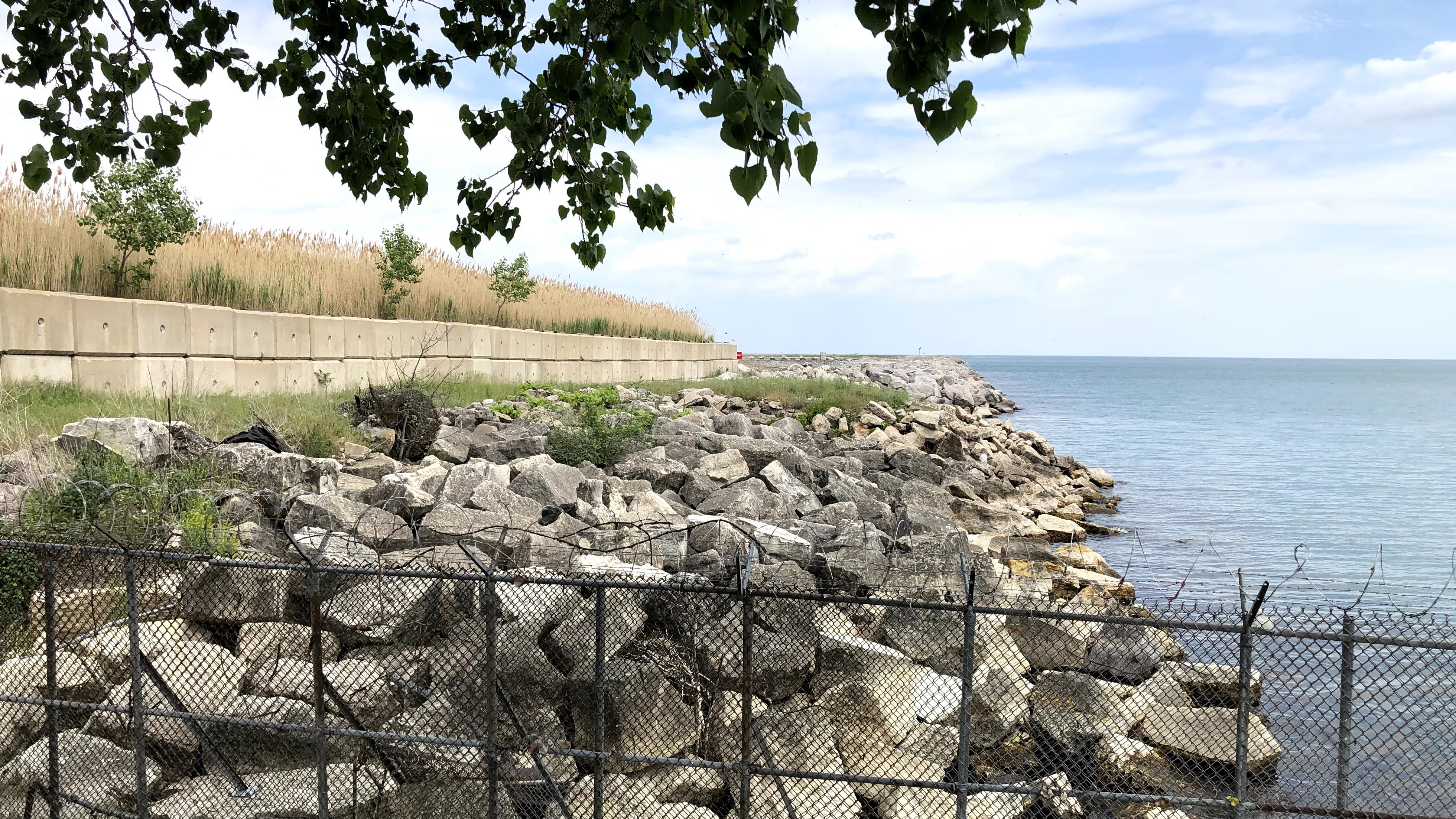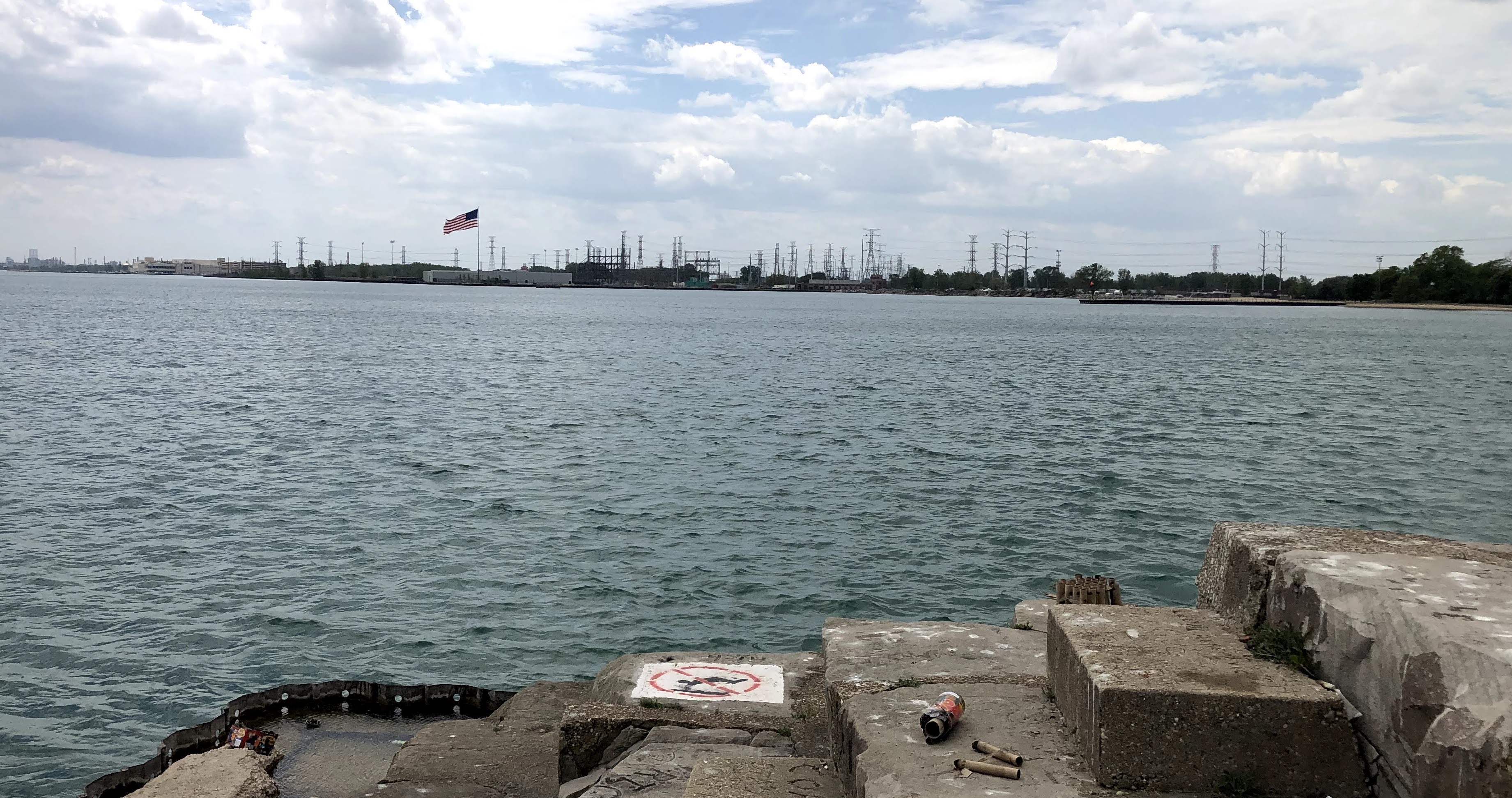Shore Land
Lakefill into ᒥᓯᑲᒥ

Berger Park // Belmont Harbor // Grant Park // 31st Street Beach // Jackson Park // Calumet Park
For full project materials for all sites, please visit jeeyeunlee.com/shore-land.
From the first years of white settlement in Chicago, the Lake Michigan shore has been intensely engineered. Over the years, land has been constructed along the lake from trash, rubble of the Chicago Fire, dirt dug up from highway construction elsewhere in the city, and sand from the Indiana Dunes and the bottom of Lake Michigan. Now, more than 5.5 square miles of lakefill stretch across 30 miles of shore from Evanston to Indiana.

Most of this land is park space, hard won over decades by advocates inspired by Daniel Burnham’s 1909 Plan of Chicago. Often described as visionary and enlightened, the plan was also meant to facilitate business tycoons’ goals of creating wealth and reducing labor conflict. Parks were meant as recreational opportunities to divert working class laborers’ anger and resentment. Today’s concerns mostly center on extending public access along the privately owned sections north and south of the current lakefront trail, as well as addressing erosion and the increasing effects of climate change on lake levels.
Yet this land technically does not belong to the City, or to the public. As the Pokagon Band of Potawatomi insisted in a 1914 lawsuit against Chicago, the lakefill extends beyond treaty boundaries and thus was never ceded by Native people. What does it mean that this much-vaunted public lakefront was born from an elitist vision of urban control and breaks treaty law by its existence?
This audio piece contemplates the liminal space between land and water as simultaneously a public good, treaty violation, and strategy to suppress insurgence. Six audio tracks map onto locations along the Chicago lakefront at Berger Park, Belmont Harbor, Grant Park, 31st Street Beach, Jackson Park, and Calumet Park, meant to be listened to while walking, moving or simply being on this made land. Looking at how language creates place, even as place exceeds human language, Shore Land incorporates interviews, laws, treaties, stories, and songs in English, Potawatomi, and Korean.

JeeYeun Lee is an interdisciplinary artist, writer, and activist based in occupied Potawatomi territory now known as Chicago. Through performance, objects, and socially engaged art, her work explores dynamics of connection, power, violence and resistance. Her work has been shown in Chicago, Detroit, Santa Fe, Ohio, Missouri, and France. She has worked with social justice and community-based organizations for over thirty years in immigrant rights, economic justice, LGBTQ issues, and domestic violence. She holds an M.F.A. in Fiber from Cranbrook Academy of Art, M.A. in Ethnic Studies from the University of California at Berkeley, and B.A. in Linguistics from Stanford University. For additional information, please visit jeeyeunlee.com.
This work is a part of Navigations, a series of artist projects in and about public space. This work has been supported by the Awesome Foundation (Chicago Chapter), the Puffin Foundation, the Individual Artist Program of the Chicago Department of Cultural Affairs and Special Events, Center for Cultural Power, and the School of the Art Institute of Chicago. In 2025, this project was supported by grants from the Illinois Arts Council Agency; CityArts grants from the City of Chicago Department of Cultural Affairs & Special Events; Cliff Dwellers Arts Foundation; Gaylord and Dorothy Donnelley Foundation; Reva and David Logan Foundation; Teiger Foundation; as well as in-kind support from Chicago Park District. In 2024, this program was supported by Hyde Park Art Center’s Artists Run Chicago Fund in partnership with Art Design Chicago, a citywide collaboration initiated by the Terra Foundation for American Art that highlights the city’s artistic heritage and creative communities. In 2023-24, this program were supported in part by federal assistance listing number 21.027 awarded to Roman Susan Art Foundation NFP by the US Treasury through the American Rescue Plan Coronavirus State and Local Fiscal Recovery Funds in the amount of $50,000, representing 17.5% of total project funding.
Shore Land was previewed at The Arts Club of Chicago in August 2021 and at MCA Chicago in May 2023. Elements of this work have been featured in the exhibitions Water in 2023 and Myth of the Organic City in 2024-2026 at 6018North, and From the Great Lakes to the Great Plains in 2025 at Bemis Center. The project was featured as a part of the Chicago Architecture Biennial in 2025. Group outings for Shore Land with Roman Susan have occurred on June 10, 2023; July 23, 2023; August 27, 2023; April 14, 2024; September 26, 2024; and October 19, 2025.
Transcripts
Berger Park (pdf)
Belmont Harbor (pdf)
Grant Park (pdf)
31st Street Beach (pdf)
Jackson Park (pdf)
Calumet Park (pdf)
Walking tours tell a very different story about Chicago and its lakefront | Chicago Tribune - August 10, 2023
Shore Land | City Cast Chicago - June 5, 2023
A Multitude of Stories | Newcity - October 27, 2022